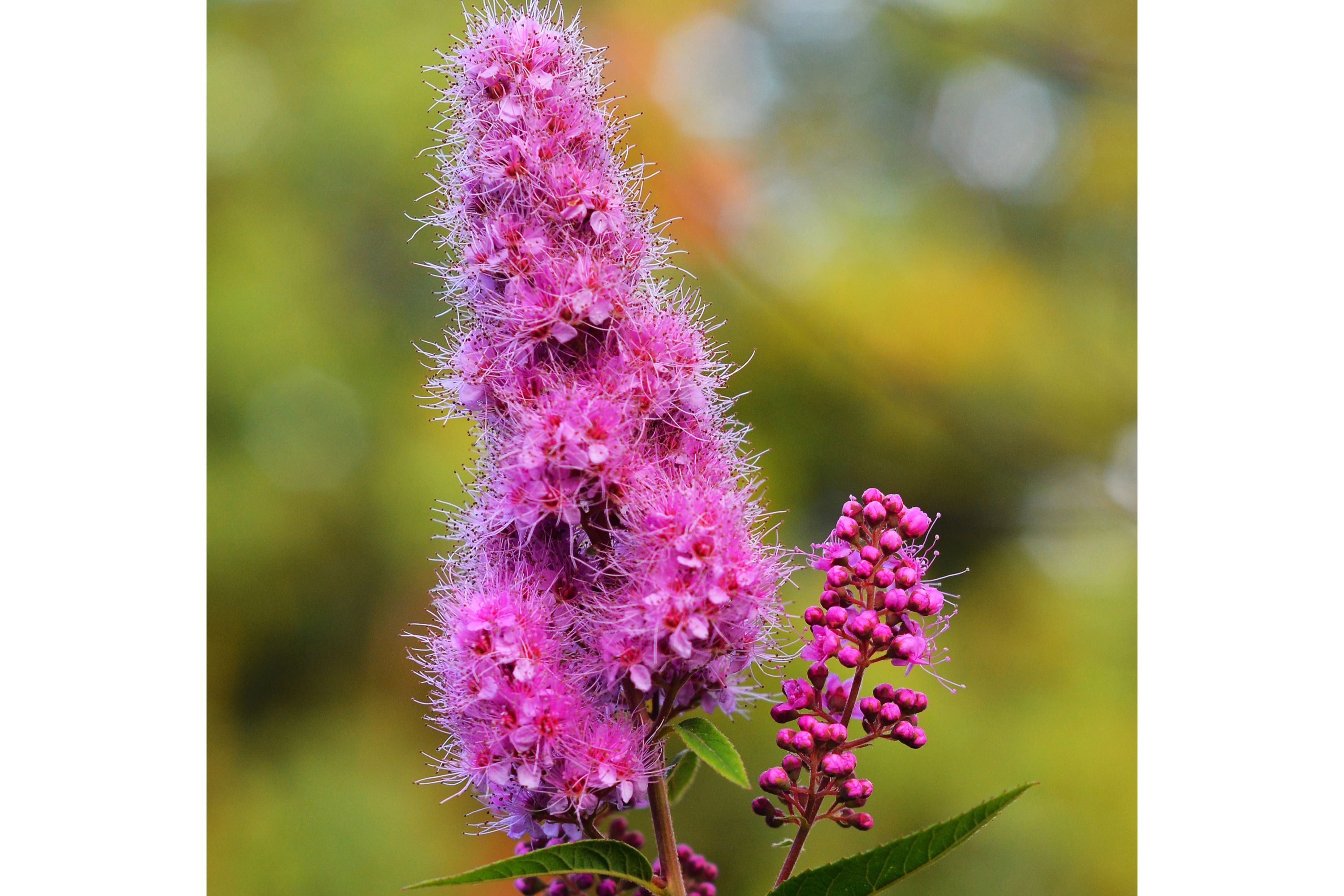Hardhack
(Spiraea douglasii)

Description
Spiraea douglasii is a species of flowering plant in the rose family native to western North America. Common names include hardhack, hardhack steeplebush, Douglas' spirea, douglasspirea, steeplebush, and rose spirea. The plant is a woolly shrub growing 3–6 feet (0.91–1.83 m) tall from rhizomes, forming dense riverside thickets. The leaves are 1–4 inches (2.5–10.2 cm) long and toothed toward the tips. They are alternately arranged, and the undersides are whitish with prominent veins. Large clusters of small, deep pink flowers form spires in early summer, later turning dark and persisting. The seeds are 0.08 inches (2.0 mm) long and are dispersed by animals and strong winds. Spiraea douglasii is native to western North America from Alaska across southwestern Canada and the Pacific Northwest. It occurs most often in riparian habitat types, such as swamps, streambanks, bogs and mudflats. It grows best on moist or semiwet soils with good drainage. It tolerates a variety of soil types as well as gravelly substrates. Spirea is shade-intolerant, and therefore grows primarily in open marshes among sedges, horsetails, wild blueberries, and other swamp flora, as well as in seral communities. Spirea foliage is browsed by black-tailed deer, but is not very palatable to livestock and only eaten by them occasionally. The flowers provide nectar for hummingbirds, and small birds eat the seeds which persist into the winter when food is less plentiful. Spirea provides nesting habitat for birds such as marsh wrens, and is a component of grizzly bear habitat. It is moderately fire-resistant, as many of the marshes across its native range would historically dry up by midsummer and be susceptible to fire. If the above-ground portion of the plant is killed, it can sprout from the stem base or rhizomes after a wildfire. It may hybridize with white spirea (S. betulifolia) to form pyramid spirea (S. pyramidata Greene). Native Americans found S. douglasii useful for making brooms and hanging seafood to cook. This plant is used as an ornamental in landscaping, where it grows best in sunny, moist places. Spirea is recommended for riparian revegetation projects in the Pacific Northwest, as it is hardy and grows quickly.
Taxonomic tree:







